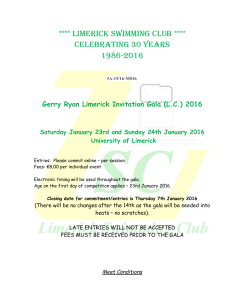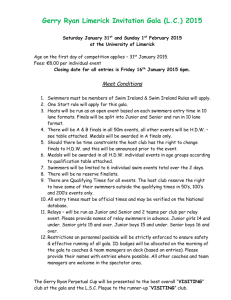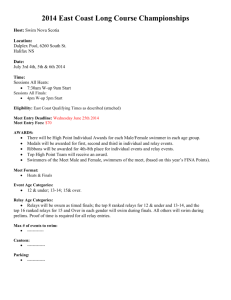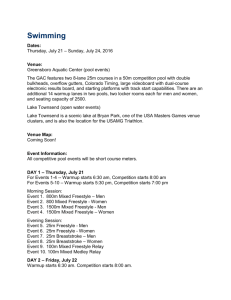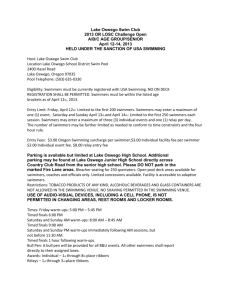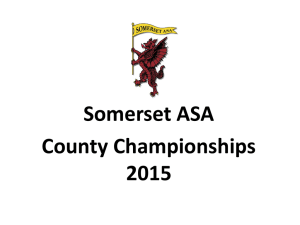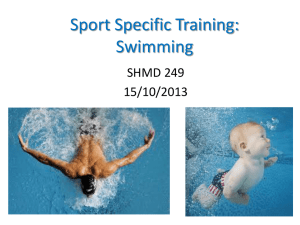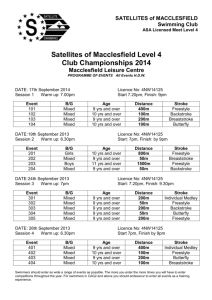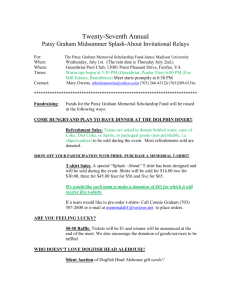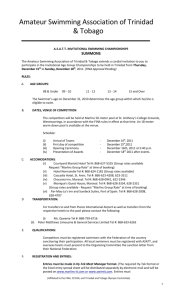2013 ELEANOR SIMMONDS - Abbey Park Middle School
advertisement
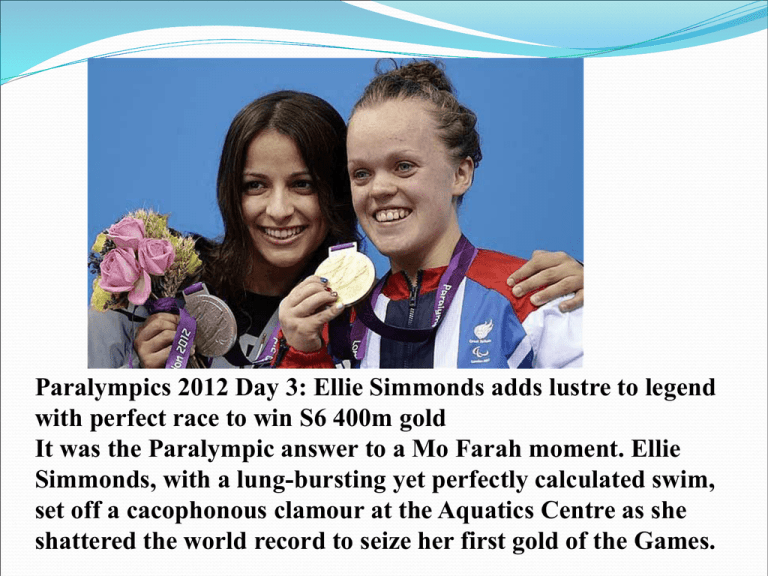
Paralympics 2012 Day 3: Ellie Simmonds adds lustre to legend with perfect race to win S6 400m gold It was the Paralympic answer to a Mo Farah moment. Ellie Simmonds, with a lung-bursting yet perfectly calculated swim, set off a cacophonous clamour at the Aquatics Centre as she shattered the world record to seize her first gold of the Games. What are your career highlights? The youngest athlete to compete at the 2008 Paralympics aged 13, Eleanor stunned spectators when she won double gold in the 100m S6 and 400m S6 freestyle events. Other wins have included ten gold World Championship .titles. Her form heading into London 2012 is mixed with two golds, a silver and a fourth at the recent British Championships. Interesting Facts Eleanor Simmonds Country: Great Britain Date of birth: 11/11/1994 Place of birth: Walsall, England Gender: Female What is your disability? I was born with achondroplasia, a bone growth disorder that causes dwarfism. I've got high expectations of myself. I'm quite a competitive person and I hate losing. What are your events? 100m freestyle SWIMMING 400m freestyle 200m individual medley 50m freestyle How do your times for different events compare? Here is a chart of results for Ellie compared to an able bodied female olympic swimmer : Event 100m freestyle 400m freestyle 200m individual medley 50m freestyle 100m freestyle 400m freestyle 200m individual medley 50m freestyle Times 1min 16.68 5 min 19.17 sec. 3 min 05.39 0 min 36.11 0 min 53.00 4min 28.43 2min 07.57 0min 24.05 How did your career in swimming start? Eleanor began swimming at age four and entered her first competition just four years later. After watching the 2004 Paralympic Games on television, Eleanor was inspired to take her sport to an elite level and stepped up her training with the aim of qualifying for Beijing 2008. Eleanor Simmonds won two gold medals in the 100m and 400m S6 freestyle aged 13 at the 2008 Beijing Games. In 2009 she became the youngest person to ever be awarded an MBE. At age 16, Eleanor is already one of the most successful Paralympic swimmers in international competition, with little evidence of disappointment thus far in her career. How does the training differ for a paralympian swimmer? The first international games for disabled people were held in 1948. Like able-body swimming, a good level of overall conditioning is required as athletes use various muscles during competition. Similarly, races are often won and lost on the turn - known as the fifth stroke. A good start - whether it be on a platform or in water - requires quick reactions. Failure to react to the start of the race can leave swimmers struggling to make up the time. Blind swimmers must react to tappers who tap the sides of the pool to make athletes aware that a turn is approaching. As Simmonds turned around to see her record time on the giant monitor, she cried. The emotion of hearing 17,500 spectators chant her name proved overwhelming for this amiable teenager, who had just grasped her third Paralympic gold medal before she had even taken her A-levels. A British audience starved of victory in the Olympic pool had found a heroine who stood a mere 4ft tall in her bare feet. “I’m on the edge of the world right now,” she said, breathlessly. Just four hours before the race was due to start at 5.30pm, the involvement of the 17 year-old’s main rival, America’s Victoria Arlen, had been under scrutiny as the International Paralympic Committee debated whether to reclassify her. Some members felt that her disability, caused by a virus that left her in a vegetative state for two years and paralysed below the waist, was not serious enough to include her in the S6 category. Final clearance arrived only at 2pm. While arguments away from the water could have distracted Simmonds, she kept her focus impeccably. Asked whether she had been unnerved at any stage, she replied: “Not really. I think it pushed me even harder.”
